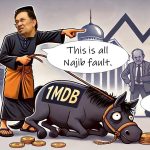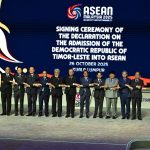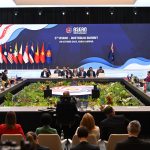
Thai Cambodia Conflict Sparks Anwar Crisis
Anwar entered the regional arena with heightened ambition in July 2025 when Malaysia moved to mediate a ceasefire between Thailand and Cambodia. The intervention marked a rare departure from ASEAN’s usual non-intrusive approach. When the ceasefire collapsed on 11 November 2025 after a landmine injured four Thai soldiers in Sisaket Province, scrutiny turned directly toward Anwar and the strategic calculations behind Malaysia’s role. The incident near Ban Nong Waeng resulted in Thailand suspending the agreement.
Now the setback intensified debate over whether Anwar misjudged the depth of the dispute and the political sensitivities along the frontier. The collapse forced analysts to reassess the motivations that brought the Malaysian Prime Minister so deeply into a conflict defined by historical grievances and entrenched nationalism.
A Conflict Shaped by History, Nationalism and Unresolved Grievances
The Thai Cambodia border conflict draws from a long history that predates both countries’ modern institutions. The 1907 French Indochina map placed the Preah Vihear Temple on the Cambodian side of the border, a position Thailand partially disputed. Although the International Court of Justice ruled in 1962 that the temple belonged to Cambodia, disagreements persisted concerning the land surrounding the structure.
Between 2008 and 2011, intense clashes along the border displaced communities and revived nationalist sentiment. Landmines scattered during earlier periods remain present across the region, and their existence complicates any effort at stabilisation. The explosion on 11 November demonstrated how easily tensions return when deeper issues remain unresolved.
Influence of Domestic Pressures on Anwar
Malaysia’s intervention coincided with significant political pressure on Anwar at home. Members of the Democratic Action Party voiced dissatisfaction over slow reforms, and Rafizi Ramli questioned the strategic value of the United States Trump trade announcement. Rising public concern regarding inflation and investment flows placed additional weight on Anwar to demonstrate effective leadership. In this environment, a diplomatic victory offered an attractive opportunity for Anwar to reinforce his political authority. Malaysia’s mediation was presented as a regional contribution, but critics argued that Anwar also viewed it as a chance to balance domestic expectations.
The dual purpose of strengthening Malaysia’s regional standing while supporting Anwar’s internal political position created a complex backdrop for the mediation effort. As the talks progressed, some analysts observed that Anwar projected a level of confidence that did not fully align with the structural risks present along the Thai Cambodia border. When the ceasefire faltered, the political cost returned to Malaysia and, more specifically, to Anwar.
Regional Reactions and the Limits of Diplomatic Influence
Thailand initially welcomed Malaysia’s involvement, yet reservations within its military became increasingly visible. Senior officers questioned whether Anwar and the Malaysian team appreciated the full historical sensitivity of the dispute. Some believed the ceasefire allowed Cambodia to gain strategic advantage by limiting Thailand’s immediate response options. When the landmine detonated, these concerns intensified. Cambodia, for its part, gained diplomatic space during the negotiations. Participation in ASEAN mediated discussions allowed Phnom Penh to project cooperation. After the explosion, Cambodia denied responsibility and pointed to older minefields, a stance that shielded it from immediate criticism while creating further difficulty for Anwar’s diplomatic narrative.
The United States monitored the situation closely. Washington viewed the dispute through the lens of Cambodia’s close ties with China and held interest in shaping any settlement. Malaysia’s independent mediation reduced the opportunity for a United States led initiative. Although Washington maintained public support for the talks, observers noted that American officials were cautious about Anwar’s assertive role and the implications for broader regional strategy.
Final Assessment
Malaysia’s involvement in the Thai Cambodia ceasefire reflected a desire to stabilise the region and reassert ASEAN’s capacity for conflict resolution. However, the political pressures surrounding Anwar’s leadership, combined with the historical depth of the conflict, raised questions about the judgment behind the initiative. The collapse of the ceasefire on 11 November illustrated the limits of short-term diplomatic intervention and showed that Anwar may have underestimated both the historical grievances and the regional sensitivities embedded in the dispute. The experience stands as a reminder that foreign policy ambitions must be carefully aligned with the realities of long-standing territorial conflicts.















